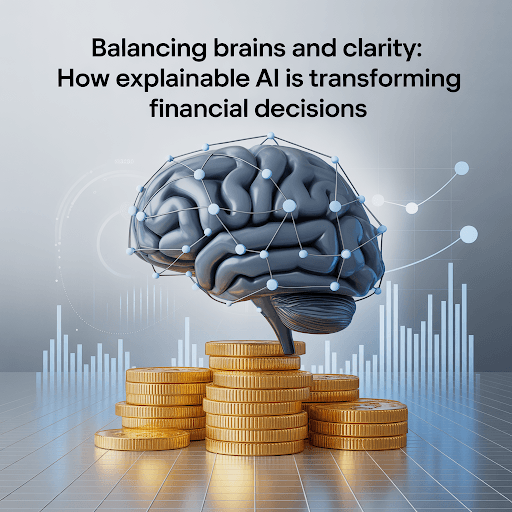
In the modern digital era, Artificial Intelligence is reshaping the financial world at lightning speed. In his recent analysis, Rajeev Reddy Chevurian established researcher in AI-driven decision systemsexplores the powerful innovations explainable AI (XAI) is bringing to financial services. His work highlights not only the rise of new technologies but also the pressing need for transparency in automated decision-making.
From Black Boxes to Glass Boxes
For years, financial institutions have relied on increasingly complex AI models to manage credit assessments and risk. While these systems dramatically improved speed and accuracy, they also created a major dilemma: decisions made by AI often appeared as “black boxes,” with their logic invisible to both human operators and regulators. This lack of transparency posed compliance challenges and sparked worries about bias, fairness, and accountability in financial decision-making.
Regulation Rises to Meet the Challenge
As AI’s influence in finance expanded, global regulatory bodies heightened demands for transparency in automated systems. This led to the introduction of new frameworks and documentation standards, especially in Europe and parts of Asia, emphasizing algorithmic explainability and fairness. Financial institutions responded by creating structured documentation and validation processes to ensure their AI models remain both effective and interpretable.
Building Blocks of Explainable AI
At the heart of this transformation is the adoption of specific XAI techniques tailored to finance. Institutions are turning to a blend of traditional and cutting-edge tools to explain their models:
- Decision Trees and Rule-Based Systems: These familiar, highly interpretable models continue to serve as foundations for credit risk and fraud detection, especially where regulatory clarity is essential.
- Linear Models: Classic tools like logistic regression remain relevant, evolving through advanced feature engineering to enhance transparency in financial analysis.
- Model-Agnostic Tools: Techniques such as LIME (Local Interpretable Model-Agnostic Explanations) and SHAP (SHapley Additive exPlanations) are enabling detailed breakdowns of complex AI decisions, offering both regulators and customers insights into why a decision was made.
Financial institutions are increasingly combining these approaches, forming hybrid frameworks that maximize the strengths of each technique and deliver robust, interpretable systems.
Enhancing Trust and Fairness
The real-world impact of XAI innovations extends far beyond regulatory compliance. Transparent AI systems are helping financial institutions detect and correct biases in automated lending, strengthen fair lending practices, and foster greater customer trust. Studies show that when customers can understand the reasons behind AI-driven decisions, their acceptance and satisfaction increase significantly. Furthermore, robust XAI systems enable more consistent audit trails, supporting both operational efficiency and regulatory reporting.
Overcoming Obstacles: Technical and Human
Implementing XAI isn’t without its hurdles. Financial organizations face the ongoing challenge of balancing model complexity with interpretability, ensuring sophisticated analytics don’t come at the cost of clarity. Technical limitations, such as the computational cost of real-time explanations, require investments in infrastructure and process optimization. Moreover, adapting to these new systems involves substantial staff training and organizational change management—a reminder that innovation isn’t only technical, but also deeply human.
The Next Wave: Neural-Symbolic Integration and Beyond
The next phase of explainable AI features neural-symbolic systems, merging symbolic reasoning with neural networks for enhanced transparency and performance. Causal inference advances allow AI to explain cause-and-effect, not just predict outcomes. Evolving regulatory frameworks are also establishing more standardized approaches to AI governance on a global scale.
In conclusion, the innovations described in Rajeev Reddy Chevuri‘s research signal a new era for financial services one where the power of artificial intelligence is finally balanced with the clarity and accountability that regulators, customers, and society demand. As XAI technologies and standards evolve, financial decision-making will become not just faster and smarter, but also more transparent, fair, and trustworthy a legacy his work helps to define.
-
Now the mobile itself will tell – “Whose call is!” Life will be easier than before

-
OnePlus Nord 4 5G Gets Massive Discount on This Platform Ahead of Nord 5 Launch, Now available for Rs 17,000; Check Specs | Technology news

-
Neeraj Chopra seeks first major title of season, up against Julian Weber in Paris Diamond League

-
India to evacuate its nationals from Israel

-
There will be shame to English speakers in the country, Amit Shah said a big thing, people who are spoken in the country will feel ashamed, Amit Shah Said Somenting Big
